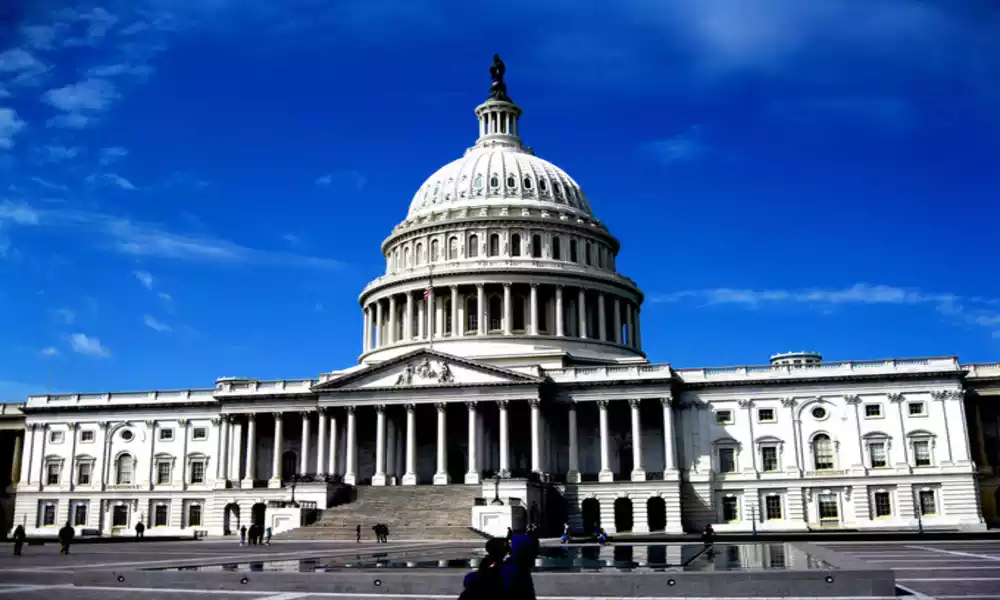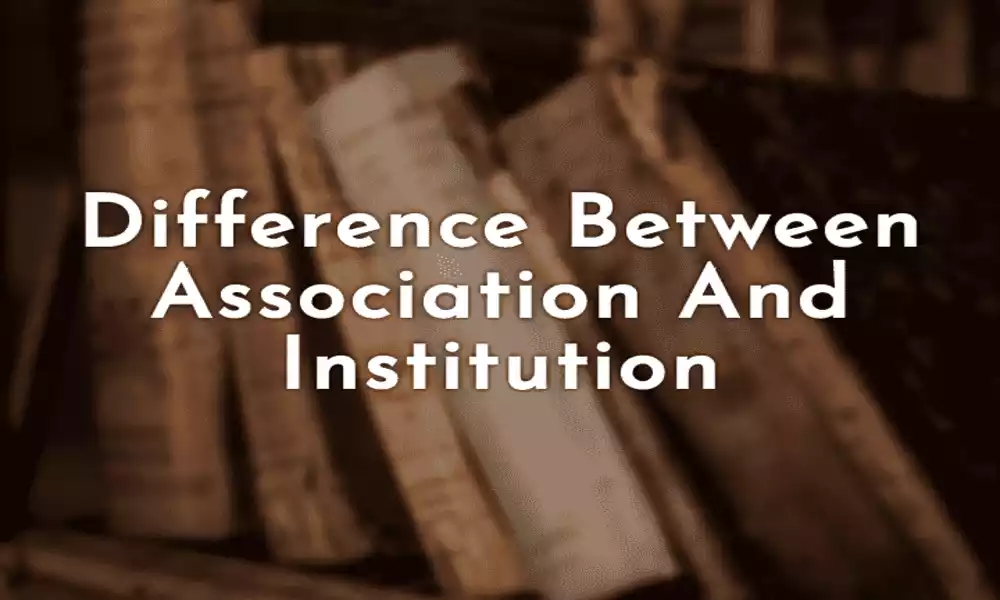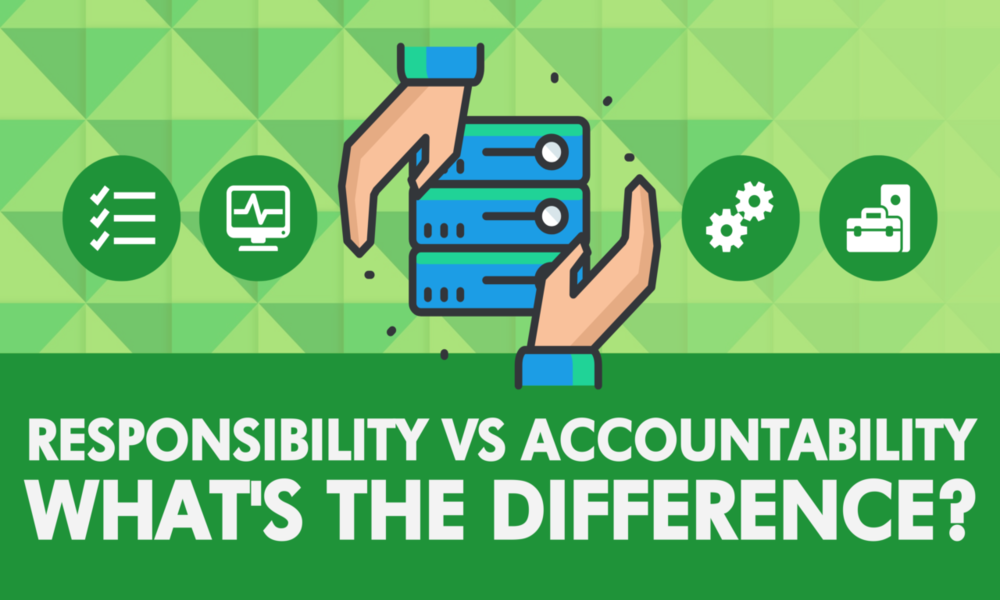Introduction of Association and Institution
Associations and institutions play vital roles in our society, playing significant roles in shaping various aspects of life. Although often used interchangeably, it is essential to recognize their differences and unique characteristics.
Different associations and institutions serve different functions and purposes – understanding these disparities can shed valuable insight into how they operate and contribute to society.
Definition of Association
An association is defined as any voluntary grouping of people or organizations coming together voluntarily for mutual purposes or objectives, such as goals, beliefs or activities that they share in common.
Associations can be professional, social or non-profit groups that operate within specific sectors or industries. Their members might include professionals, enthusiasts, advocates or individuals with similar causes.
Associations offer members a platform for networking, collaboration, and collective action, helping them work towards their shared goals together. Activity for these professionals could include organizing events, conducting research, advocating for policy changes, providing educational resources or supporting professional development.
Associations are generally governed by a set of bylaws or rules that define their structure, membership criteria, and decision-making processes.
Elected leaders or appointed officials may oversee managing its affairs while funding can come from membership fees, sponsorships, grants or donations – providing support for ongoing activities or initiatives by the association.

Definition of Institution
Institutions are organizations, structures or systems which play a vital role in society by adhering to specific rules or norms that define their operation and purpose. Institutions serve various functions such as governance, education, finance or justice and often maintain authority over time – essential features that help shape and preserve social order.
Institutions take various forms, from government bodies and educational institutes, financial organizations and legal systems, religious establishments and healthcare systems – such as universities, banks, courts, legislative bodies, hospitals and religious groups.
Institutions typically feature a clear structure and hierarchy, with designated roles and responsibilities for individuals within their organization. Institutions usually adhere to rules, policies, and procedures which guide their functioning and decision-making processes as well as enforce these regulations in order to maintain consistent fair operations of their institution.
Institutions may obtain funding through various sources, including government allocations, tuition fees, grants and donations from donors or revenue generated through operations. Once available resources are used to support activities, infrastructure needs, personnel needs and services provided.
Overall, institutions play a pivotal role in society by providing essential services, creating frameworks for governance and interaction among constituents, upholding values and norms within communities or nations and protecting values and norms within them.

Comparison Table of Association and Institution
Below is a comparison table highlighting the key differences between associations and institutions:
| Aspect | Association | Institution |
|---|---|---|
| Definition | A group of individuals or organizations that voluntarily come together based on shared interests or goals. | An established organization or system that serves a specific purpose within society, operating under defined rules and regulations. |
| Purpose | Pursue common interests, goals, or activities; provide a platform for networking, collaboration, and collective action. | Provide essential services, establish frameworks for governance, education, finance, justice, etc., and uphold values and norms within a community or nation. |
| Membership | Voluntary and typically open to individuals or organizations with shared interests or qualifications. | Can have voluntary or mandatory membership, depending on the type of institution. Members can be individuals, organizations, or governments. |
| Governance | Governed by elected or appointed leaders who make decisions on behalf of the association. | Governed by a hierarchical structure with defined roles and responsibilities, often with higher authorities or governing bodies overseeing operations. |
| Structure | Relatively flexible and adaptable, allowing for different sizes and structures based on the association’s goals. | More rigid and formalized structure with clear hierarchies, divisions, and departments to ensure smooth functioning. |
| Funding | Relies on membership fees, sponsorships, grants, donations, or revenue generated through activities to support operations. | Funding can come from government allocations, tuition fees, grants, investments, or revenue generated through services provided. |
| Examples | Professional associations, non-profit organizations, trade unions. | Universities, banks, courts, legislative bodies, hospitals. |
| Legal Status | Can have legal recognition but typically operate as separate entities from governments. | Often legally recognized and subject to specific regulations and laws based on their nature and purpose. |
| Influence | Often focused on advocacy, networking, education, and professional development within specific fields or interests. | Play a significant role in shaping and maintaining social order, providing services, and upholding societal values and norms. |
By examining these key distinctions, we can better appreciate the unique roles and contributions of both associations and institutions in our society.
Nature and structure
Nature and structure differences between associations and institutions can be summarized as follows:
Associations: On their core level, associations are comprised of voluntary membership between individuals or organizations that share similar goals or activities.
Associations tend to have more flexible structures, accommodating variations in size, structure and membership criteria more easily than businesses do.
Independence: Associations often operate independently from governments or other institutions, maintaining some degree of autonomy in their decision-making processes.
Membership: Association membership is usually voluntary and individuals or organizations join based on how well their purposes or objectives match with that of an association.
Decision-Making: Associations are typically run by elected or appointed leaders who make decisions on behalf of their membership through democratic processes involving member participation.
Structure: Associations can take many forms, ranging from informal networks to more formally organized structures with defined roles and committees.
Institutions:
Nature: Institutions are formal organizations or systems established to fulfill specific functions within society, such as governance, education, finance or other such issues.
Formality: Institutions tend to take on more formal structures, governed by rules, regulations and established norms. Authority: Institutions often possess authority and power within their designated fields, exerting influence while enforcing rules and policies.
Membership: Membership in institutions may be voluntary or mandatory depending on their type. Individuals, organizations or governments may join as members.
Decision-Making: Institutions generally employ hierarchical structures with designated roles and responsibilities for each member, with decision-making processes typically including higher authorities or governing bodies.
Stability: Institutions are designed to be long-standing and stable, with established procedures and systems in place to guarantee continuity and consistency.
These variations in nature and structure reflect the different purposes and roles associations and institutions serve within society.
Associations offer platforms for voluntary collaboration and collective action while institutions are permanent bodies with defined responsibilities to fulfill specific functions or provide services.
Membership and participation
Membership and participation in associations and institutions can be summarized as follows:
Associations:
Voluntary Membership: Associations typically employ voluntary membership policies, meaning individuals or organizations join according to their personal decision and in line with its goals or interests.
Qualifications for Membership: Associations may set forth specific membership qualifications or criteria, such as professional credentials, shared interests or commitment to a particular cause.
Active Engagement: Association members should engage actively with their activities, events and initiatives. By actively taking part, members have an opportunity to contribute their voice into decision making processes or serve on committees while taking leadership roles within the association.
Networking and Collaboration: Associations provide Opportunities for networking and Collaboration among their members, creating avenues for Individuals or organizations to form Connections, share Knowledge, and work towards common goals.
Associations foster a sense of Community among their members by creating an Atmosphere of shared identity and forging bonds based on Common goals or Interests.
Institutions:
Voluntary or Mandatory Membership: Institution membership can differ depending on its nature and purpose, with some permitting voluntary membership and others obligating citizens to become part of them such as government institutions.
Membership Categories: Institutions may offer different levels or categories of membership, such as individual, institutional and government memberships.
Rights and Responsibilities: Members of Institutions have certain rights and Responsibilities associated with Membership, such as Accessing services, abiding by rules and Regulations or participating in decision-Making Processes.
Formal Processes: Institutions generally adhere to formal processes for joining or becoming members, which may include application processes, fees and compliance with specific criteria or regulations.
Participation Limits: While institutions often encourage member engagement in certain activities and committees, individual participation in decision-making processes or governance may be limited in comparison to associations.
Institutions typically employ hierarchies and procedures for decision-making that can limit individual input into decision making processes or governance structures. These differences in membership and participation reflect the distinctive purposes and qualities of associations and institutions.
Associations tend to prioritize voluntary engagement and active participation from their members while institutions may have both voluntary and mandatory membership, with differing levels of individual involvement depending on the particular institution context.
Purpose and goals
Associations and institutions vary greatly in their goals depending on their unique roles within society.
Below are the following points describing each association or institution’s purpose and goals:
Associations:
Common Interests: Associations are formed by people or organizations who share similar goals or activities and create them in order to pursue these mutually beneficial activities together. Their primary function is bringing like-minded individuals or entities together for this pursuit of their common goals or activities.
Advocacy and Representation: Associations often act as advocates for their members, advocating on their behalf in terms of interests, rights, and concerns. They may engage in lobbying efforts, public awareness campaigns, policy advocacy campaigns, etc. in order to advance these causes.
Networking and Collaboration: Associations are great platforms for networking and collaboration among their members, providing platforms for exchanging information, working on projects together and professional or personal growth opportunities.
Education and Training: Many associations focus on offering educational resources, training programs, workshops, and conferences to enhance the knowledge and abilities of their members in specific areas.
Professional Development: Professional associations often prioritize the professional growth and advancement of their members by offering certifications, continuing education opportunities, mentorship programs and career resources.
Standards and Best Practices: Associations can set and promote industry or professional standards, guidelines, and best practices that foster quality, ethics, and professionalism within their fields of operation.
Institutions:
Service Provision: Institutions are created to serve essential functions within society such as education, healthcare, justice administration, financial matters, infrastructure development and so forth.
Governance and Regulation: Institutions often establish rules, regulations, or policies with the primary goal of facilitating society’s efficient functioning by setting forth rules governing various aspects of public and private life.
Public Interest: Institutions often prioritize the welfare and well-being of their constituents or the communities they serve, striving to ensure equitable access to services and opportunities for all individuals.
Research and Knowledge Creation: Educational and research institutions strive to generate new knowledge by conducting research. Their goal is to contribute to society’s intellectual and scientific advancement.
Economic Stability: Financial institutions such as banks aim to maintain economic stability by offering financial services, managing transactions and supporting investments that boost economic growth.
Social Order and Cohesion: Institutions play a key role in maintaining social order and cohesion by upholding legal systems, guaranteeing justice and providing mechanisms to resolve disputes, protect rights and enforce laws.
These differences in purpose and goals illustrate how associations and institutions serve their members or the larger society through unique functions and contributions.
Governance and decision-making
Governance and decision-making processes vary significantly among associations and institutions in terms of structure, decision-making authority and participation mechanisms.
Here are the key points:
Associations:
Democratic Decision-Making: Associations often employ a democratic approach to decision making, where members have equal say in voting on key matters or electing leaders or participating in committees. This may include voting on specific matters such as voting for key issues or electing leaders and participating on committees.
Governing Bodies: Associations typically utilize governing bodies, such as a board of directors or executive committee, that are responsible for making strategic decisions and overseeing operations of their association. Often elected or appointed by its members themselves.
Member Engagement: Associations take member involvement seriously and may provide mechanisms for soliciting input or receiving feedback, or engaging them in specific initiatives, programs, or projects.
Bottom-Up Approach: In many associations, decision-making processes follow a bottom-up model with ideas, proposals, or initiatives coming directly from members and being discussed and approved within the association structure.
Institutions:
Hierarchical Structure: Institutions usually feature a hierarchical structure with clear lines of authority and decision-making power that flow down from higher-up positions within their hierarchy to lower positions within said hierarchy.
Leadership Positions: Institutions have leaders such as executives, administrators or directors tasked with making decisions and overseeing operations of their institution. Typically these individuals are appointed or selected based on expertise or authority criteria.
Institutions often employ decision-making procedures or protocols designed to ensure consistency, fairness and compliance with rules and regulations when making decisions. Such processes could involve consultations, committees or formalized processes designed to consider all perspectives before coming to decisions.
External Influences: Institutions can also be affected by external forces such as government regulations, legal frameworks or public policies that govern decision-making within their institution.
Decision-Making Centralized: Decisions at many institutions tend to be made more centrally, with more authority concentrated at the top of organizational structures.
Governance and decision-making processes vary between associations and institutions due to their unique structures and dynamics.
Associations tend to prioritize member participation and democratic decision-making while institutions tend to adopt a more hierarchical and centralized approach in decision-making, prioritizing fulfilling their functions while fulfilling obligations to stakeholders or the public.
Funding and resources
Funding and resource acquisition strategies vary considerably according to sources, mechanisms, and utilization within associations and institutions.
Here’s an overview:
Associations:
JOURNEY HOME Membership Fees: Many associations rely heavily on membership dues as their main source of funding, with members contributing regular dues or fees to support its activities and initiatives.
Sponsorship and Donations: Associations can seek sponsorships from businesses, organizations, or individuals willing to back their cause; in addition, donations may come from members or external sources.
Grants and Funding Opportunities: Associations may apply for Grants and funding Opportunities offered by Government agencies, Foundations or other funding bodies that align with their mission or Projects.
Associations can generate revenue from events and services by organizing conferences or workshops which generate registration fees or sponsorship arrangements; additionally they may offer services, publications or resources at a fee for their members.
Voluntary Contributions: Associations can greatly benefit from the donations of their members who volunteer their time, expertise or resources in support of its activities.
Institutions: For public institutions in particular, government funding provides a significant portion of their revenue stream. Governments allocate funds in order to maintain essential institutions like schools, hospitals, and public services.
Tuition Fees: Educational Institutions such as Universities and colleges rely heavily on tuition fees paid by Students as their main source of funding for Operational expenses and Educational Programs. These payments support their institutions’ overall operational costs as well as educational initiatives.
Grants and Research Funding: Research institutions or academic departments within institutions may secure grants or research funding from government agencies, foundations or private organizations for various research projects.
Endowments and Investments: Some institutions benefit from endowments, which consist of gifts from individuals such as alumni or benefactors to the institution in exchange for donations of funds or assets to support its operations. Institutions may also invest their funds to generate returns that enable their ongoing operation.
Revenue From Services: Institutions such as hospitals, healthcare facilities or cultural organizations may generate revenue by offering services, admission fees or rentals to visitors or members.
Public-Private Partnerships: Institutions can form public-private partnerships to receive funding support from private entities through collaborations, sponsorships or joint initiatives that provide financial resources.
Associations and institutions employ distinct strategies for funding and resource acquisition that reflect their specific purposes, structures, and operational models.
While associations typically rely on member contributions and external sponsorships as source of resources acquisition, institutions tend to rely on various funding sources tailored specifically to their duties and obligations.
Legal status and regulations
Associations and institutions vary when it comes to legal status and operating regulations that govern them.
Here is an overview of their respective legal structures:
Associations: Legal Recognition: Associations can obtain legal recognition depending on the jurisdiction in which they operate. Legal recognition grants them formal status and ensures certain rights and responsibilities under law.
Registration and Incorporation: Associations may need to register or incorporate with certain laws or regulations in order to establish legal existence. This process varies by jurisdiction and may involve fulfilling criteria, submitting documentation, and paying fees.
Governance and Reporting: Associations may be subject to regulations related to governance, financial reporting and transparency. For example, they may need to keep accurate records, disclose financial details as required and comply with relevant laws and regulations.
Taxation: Associations may have unique tax obligations and exemptions depending on their legal status and nature of activities. Regulations vary by jurisdiction and may be dependent upon factors like their purpose, nonprofit status or income-generating activities.
Sector-Specific Regulations: Associations such as professional societies, trade unions or nonprofit organizations may be subject to sector-specific regulations that govern their activities, ethical standards, membership requirements or codes of conduct.
Institutions:
Legal Recognition: Institutions typically enjoy legal recognition and are established according to specific laws or regulations that address their type and purpose. Once created, these formal entities possess specific rights, obligations and authorities.Institutions may obtain a charter or incorporate under relevant laws to establish legal existence and outline their purpose, scope, and governance structures.
Compliance and Regulations: Institutions are subject to various laws and regulations that regulate their operations depending on their nature and function, such as regulations pertaining to education, healthcare, finance, governance justice or specific industry-related legislation.
These may include regulations related to education, healthcare, finance governance justice or specific industry codes of practice.
Accreditation and Licensing: Some institutions, such as educational or healthcare facilities, must obtain accreditation or licensing from regulatory bodies in order to demonstrate compliance with quality standards, safety protocols, and professional requirements.
Compliance Reporting: Institutions may be subject to various reporting obligations, such as financial reporting, compliance with regulations or performance evaluations in order to demonstrate transparency and accountability with relevant authorities, stakeholders or the public.
Government Oversight: Institutions may come under government or regulatory body oversight that monitors operations, adheres to standards, enforce laws and regulations and monitor operations accordingly.
Legal requirements and regulations pertaining to associations and institutions vary by jurisdiction and field of operation, which serves to promote transparency, accountability, and the smooth running of these entities.
Complying with such legal regulations helps to ensure transparency, accountability and proper functioning for these organizations.
Conclusion
Associations and institutions differ significantly in many key ways, including their nature, structure, membership, purpose, governance, funding and legal status. Associations are voluntary organizations formed by individuals or organizations with shared goals or interests that act as platforms for collaboration, networking, advocacy as well as democratic decision-making processes with member participation at its heart. Associations typically rely on membership fees, sponsorships, donations or grants for funding their operations.







